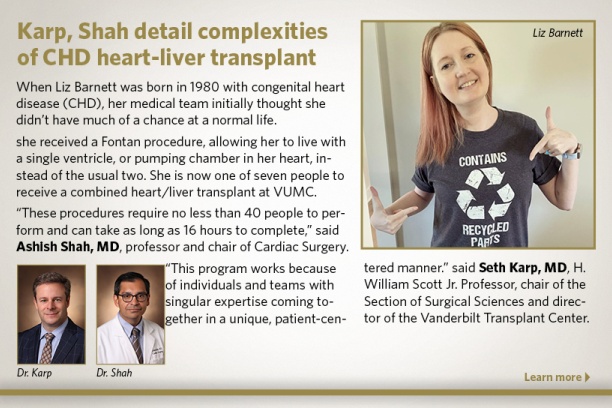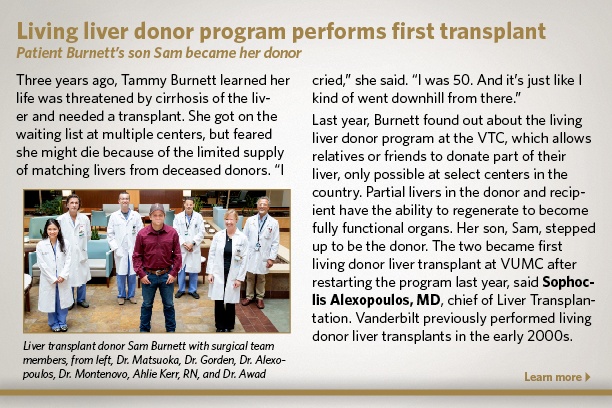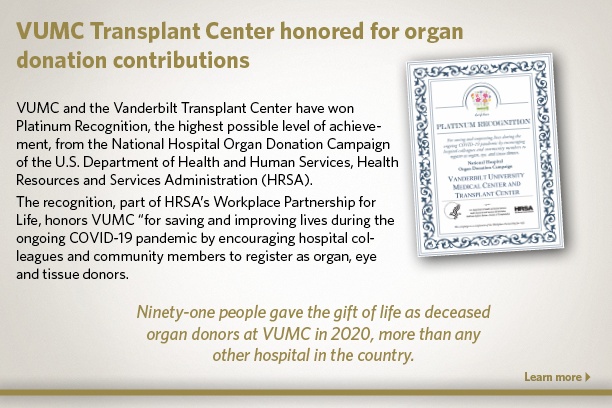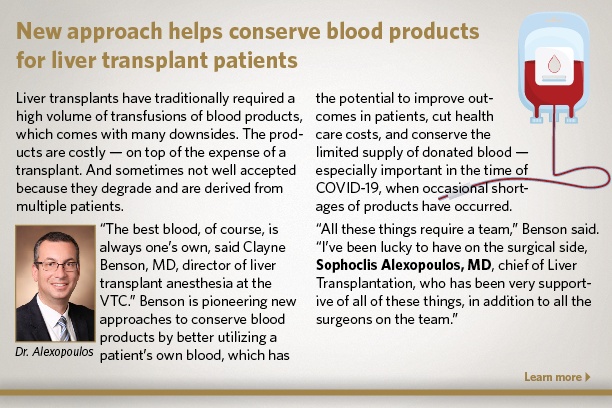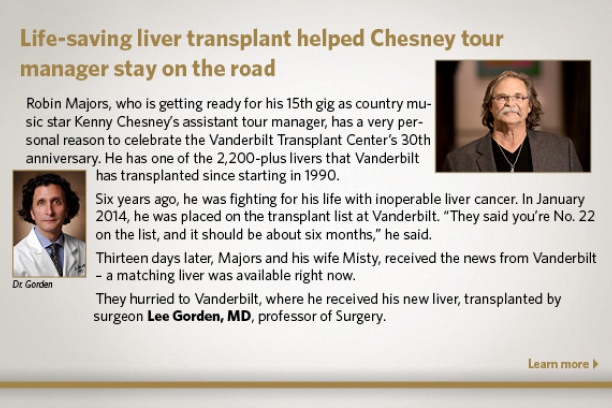Our approach to treatment uses careful assessment and selection to offer our patients the best long-term results. In addition to the Adult Liver Transplant Program and the Pediatric Liver Transplant Program for end-stage liver disease, our clinical services include the following surgical procedures pertaining to the liver, the gallbladder, biliary ducts and associated anatomical structures.
- Liver resection: removal of up to 80% of the liver as a treatment for tumors, cysts, abscesses, and traumatic rupture. The outcome is aided by the regenerative capacity of the liver.
- Lobectomy or segmentectomy: removal of a lobe or segment of the liver along with the associated vessels and avoiding injury to vessels and bile ducts serving the surrounding tissue.
- Roux-en-Y hepaticojejunostomy or choledochojejunostomy: surgical reconstruction to reestablish bile flow involving the small intestine to provide drainage without reflux, used as a treatment for sclerosing cholangitis, injured bile ducts, and bile duct tumors.
- Whipple procedure: a radical pancreaticoduodenectomy sometimes including removal of a distal portion of the stomach, the entire duodenum, and the head of the pancreas.
- Pancreaticojejunostomy: surgical connection of the pancreatic duct with the small intestine.
- Gastrojejunostomy: surgical anastomosis between the stomach and the small intestine.
- Laparotomy: surgical incision through the abdominal wall for access to the peritoneal cavity for exploratory purposes.
- Splenectomy: surgical removal of the spleen.
- Cholecystectomy: surgical removal of the gallbladder.
- Bile duct resection: surgical removal of all or part of the primary bile duct.
- Portosystemic shunt: full or partial diversion of blood flow from the portal system to stop acute bleeding or prevent rebleeding in patients with portal hypertension.
- TIPS (transjugular intrahepatic portasystemic shunt): diversion of blood flow between the portal vein and the hepatic vein through the liver to stop acute bleeding or prevent rebleeding.
- Endoscopic stenting: minimally invasive placement of supports to prevent blockages of the bile ducts and pancreas.
- Percutaneous stenting: through-the-skin placement of supports to prevent blockages of the bile ducts and pancreas.
- Balloon dilatation: expansion of blocked passageways to restore normal flow of blood or bile.
- Chemoembolization: delivery of anti-tumor agents (chemotherapy) to a segment of the liver and thrombosing of blood vessels sustaining the tumor tissue.
- RF (radiofrequency) ablation: destruction of liver tumors using heat passed through a needle system placed into the liver.
- Percutaneous alcohol injection: through-the-skin injection of ethanol into tumor tissue, resulting in complete destruction of the lesion in most patients.
